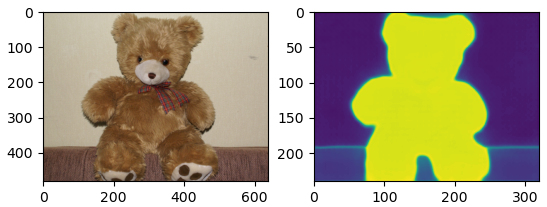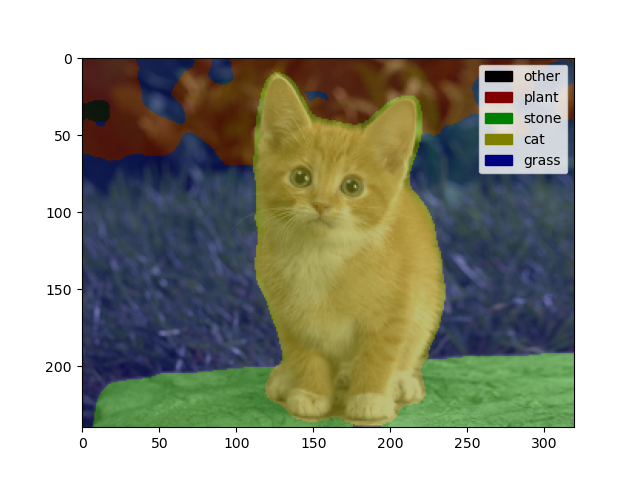This is a minimal version of the dense (per-pixel) CLIP feature extractor proposed in Language-driven semantic segmentation at ICLR 2022.
Note: I am not an author on the paper. I merely took their original implementation and extracted the core components therein.
First, install a recent pytorch release by following instructions on https://pytorch.org/
Now, install the OpenAI CLIP package by running
pip install git+https://github.com/openai/CLIP.gitBuild the lseg package by running
python setup.py build developDownload the weights of the pretrained model from this OneDrive link.
Copy this over to the examples/checkpoints directory.
Note: Source images used in the examples are from Wikimidea and the original LSeg repo.
cd examples
python extract_lseg_features.pyCommandline options supported
usage: extract_lseg_features.py [-h] [--checkpoint-path STR|PATH]
[--backbone STR] [--num-features INT]
[--arch-option INT] [--block-depth INT]
[--activation STR] [--crop-size INT]
[--query-image STR|PATH] [--prompt STR]
╭─ arguments ────────────────────────────────────────────────────────────────╮
│ -h, --help show this help message and exit │
│ --checkpoint-path STR|PATH │
│ (default: │
│ lseg-minimal/examples/checkpoi… │
│ --backbone STR (default: clip_vitl16_384) │
│ --num-features INT (default: 256) │
│ --arch-option INT (default: 0) │
│ --block-depth INT (default: 0) │
│ --activation STR (default: lrelu) │
│ --crop-size INT (default: 480) │
│ --query-image STR|PATH (default: │
│ lseg-minimal/images/teddybear.… │
│ --prompt STR (default: teddy) │
╰────────────────────────────────────────────────────────────────────────────╯
This script should produce an output that looks like:

This example loads an image, takes an arbitrary set of class labels specified as comma separated text WITHOUT ANY WHITE SPACES, and performs open-set segmentation.
cd examples
python lseg_openset_seg.pyCommandline options supported
usage: lseg_openset_seg.py [-h] [--checkpoint-path STR|PATH] [--backbone STR]
[--num-features INT] [--arch-option INT]
[--block-depth INT] [--activation STR]
[--crop-size INT] [--query-image STR|PATH]
[--segclasses STR]
╭─ arguments ────────────────────────────────────────────────────────────────╮
│ -h, --help show this help message and exit │
│ --checkpoint-path STR|PATH │
│ (default: │
│ lseg-minimal/examples/checkpoi… │
│ --backbone STR (default: clip_vitl16_384) │
│ --num-features INT (default: 256) │
│ --arch-option INT (default: 0) │
│ --block-depth INT (default: 0) │
│ --activation STR (default: lrelu) │
│ --crop-size INT (default: 480) │
│ --query-image STR|PATH (default: │
│ lseg-minimal/images/cat.jpg) │
│ --segclasses STR (default: plant,grass,cat,stone) │
╰────────────────────────────────────────────────────────────────────────────╯
When run with the default options, this should produce the following image
